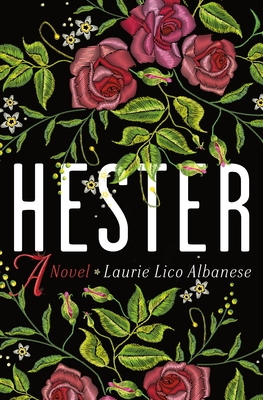TL;DR
Hester by Laurie Lico Albanese tells the story of Isobel Gamble, a seamstress in 19th-century Salem, who navigates personal and societal challenges while forming a bond with the young Nathaniel Hawthorne, exploring themes of female creativity and America's dark past.
What is Hester about
Set in the early 1800s, Hester follows Isobel Gamble, a talented seamstress who flees Scotland with her husband, Edward, an opium-addicted apothecary. Upon their arrival in Salem, Edward abandons Isobel, leaving her to fend for herself in a new and unfamiliar land. Struggling with her circumstances, she encounters Nathaniel Hawthorne, whose own troubled history intertwines with hers. Their relationship blooms amidst a backdrop of societal pressures, fears of witchcraft, and the early days of the Underground Railroad. The novel not only serves as a fictional exploration of the woman who may have inspired Hester Prynne from Hawthorne's The Scarlet Letter, but also delves into the themes of female empowerment and the quest for identity in a nation grappling with its own complex history.
Hester 8 Key Takeaways
Isobel's journey begins.
The novel opens with Isobel Gamble leaving Scotland with her husband, Edward. Their departure is marred by Edward's opium addiction and debts, setting a tone of urgency and desperation for their new life.
Edward abandons Isobel.
Shortly after arriving in Salem, Edward joins a departing ship, leaving Isobel alone and impoverished. This pivotal moment forces her to confront her vulnerabilities and resourcefulness in an alien society.
Isobel meets Nathaniel Hawthorne.
As Isobel navigates her new life, she encounters a young Nathaniel Hawthorne. Their instant attraction serves as a catalyst for exploration of their intertwined destinies and creative aspirations.
The growth of Isobel and Nathaniel's bond.
Their relationship deepens as they share struggles and dreams, blurring the lines between muse and creator, while also reflecting the societal limitations placed on artists, particularly women.
Themes of witchcraft and societal judgement.
Interwoven throughout the narrative are reflections on the historical persecution of women labeled as witches, paralleling Isobel's own experiences and the fears of her community.
Exploration of the Underground Railroad.
The novel highlights the early days of the Underground Railroad, showcasing Isobel's evolving understanding of freedom, safety, and the cost of liberty for marginalized groups.
Isobel's journey of self-discovery.
As Isobel grapples with her identity, she learns to embrace her creative talents and the complexities of her past, embodying resilience in the face of oppression.
The conclusion of Isobel's story.
In a poignant resolution, Isobel confronts the scars of her history and the legacy of women like her, leaving readers with reflections on creativity, love, and the quest for one’s rightful place in history.
Top Hester Quotes
- In this world, the freedom to create is often shadowed by the chains of expectation and fear.
- To be a woman with a voice is to tread the fine line between muse and martyr.
- Our past shapes us, but it is our choices that define our legacy.
Who should read Hester?
Hester is ideal for readers who appreciate historical fiction infused with themes of feminism and creativity. Those interested in the complexities of identity and societal roles will find Albanese's nuanced portrayal of Isobel and her world both enlightening and thought-provoking.
Hester Best Reviews
- The New York Times praises Hester as a 'lyrical exploration of history and identity, rich with emotional depth and feminist insight.'
- Kirkus Reviews calls it 'a mesmerizing blend of fact and fiction that breathes life into the shadows of American history while illuminating the struggle for female voice.'
- The Boston Globe highlights Albanese's 'meticulous research and evocative storytelling that breathe life into the forgotten narratives of women in literature.'
People also liked these summaries
Hester FAQs
What is the significance of Isobel's character in Hester?
Isobel represents the struggles of women in the 19th century who sought to assert their creative identities amidst societal constraints, serving as a lens through which the reader can explore themes of empowerment and resilience.
How does Hester connect to The Scarlet Letter?
Hester serves as a reimagining of the character who inspired Hester Prynne from Nathaniel Hawthorne's The Scarlet Letter, providing a fresh perspective on female experiences and challenges that were overlooked in the original narrative.
